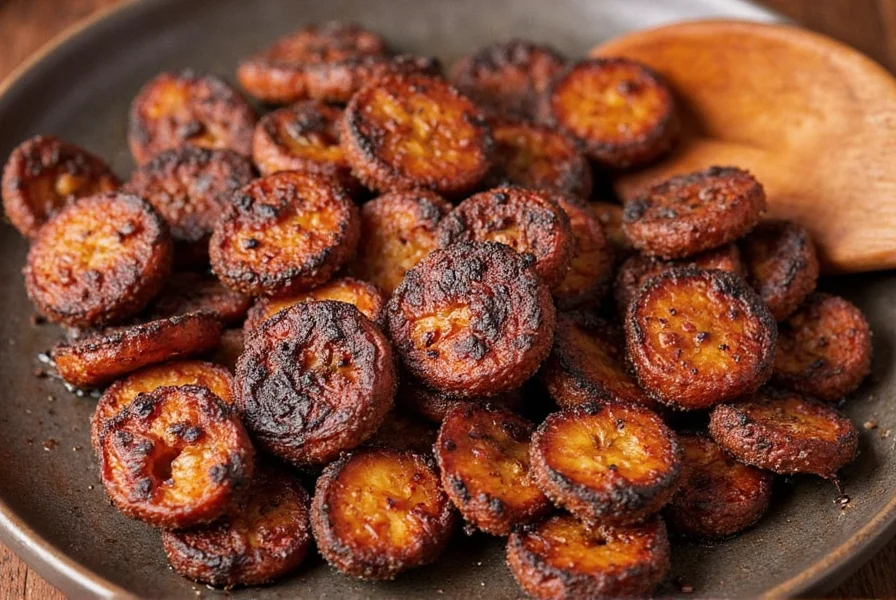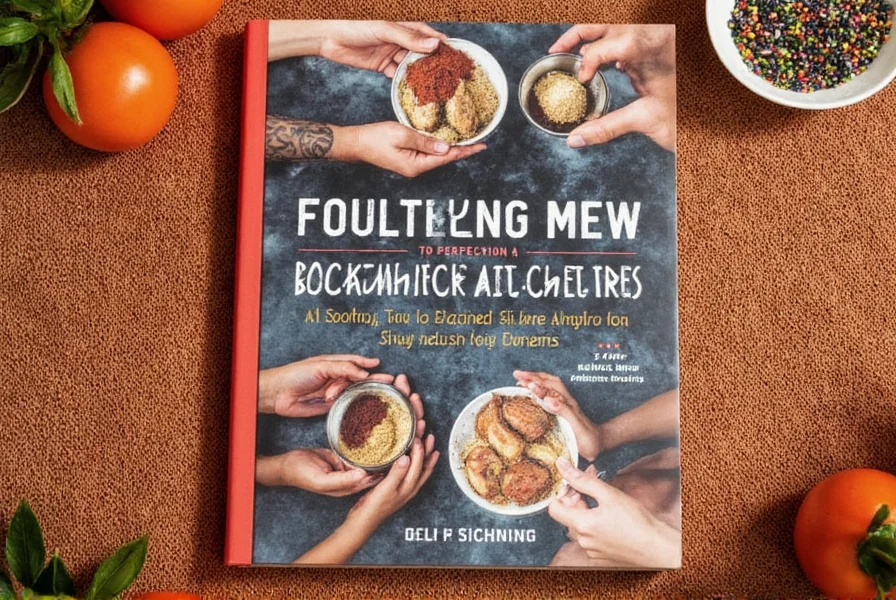What's the Deal with Blackening Seasoning by Paul Prudhomme? A Spicy, Sizzling Guide!
Welcome, spice lovers and culinary adventurers! Today, we’re diving headfirst into one of the most iconic seasonings in modern American cooking — Blackening Seasoning by Paul Prudhomme. Whether you’re a home cook experimenting on a weeknight or a pro chef looking for that bold, smoky kick, this blend deserves a spot in your pantry.
Table of Contents
- The History Behind Blackening Seasoning
- What Exactly Is Blackening Seasoning?
- How to Use It Like a Pro
- Buying Guide: Finding the Best Blackening Seasoning
- Frequently Asked Questions
- Conclusion: Spice Up Your Life with Paul Prudhomme’s Magic Blend
🔥 The History Behind Blackening Seasoning
If you’ve ever wondered who came up with the idea of slathering meat in spices and searing it until it’s blackened at the edges — voilà! The genius behind it is none other than Chef Paul Prudhomme, a Louisiana native whose influence on Cajun and Creole cuisine cannot be overstated.

In the early 1980s, Chef Prudhomme introduced the world to blackened redfish, a dish that combined intense seasoning with high-heat searing. This technique created a charred crust packed with flavor — and a new trend was born. His signature blackening seasoning quickly became a household name, celebrated for its robust flavor profile and simplicity.
🌶️ What Exactly Is Blackening Seasoning?
At its core, blackening seasoning is a dry spice blend used to coat meats (and sometimes vegetables) before searing them at high temperatures. The result? A beautifully crusted, deeply flavorful surface that enhances texture and taste.
Common ingredients in a traditional blackening seasoning blend include:
- Paprika (for color and mild heat)
- Garlic powder
- Onion powder
- Thyme
- Oregano
- Black pepper
- Cayenne pepper (adds the heat)
- Salt
- Dried mustard
- White pepper
The key difference between blackening seasoning and other spice blends like Cajun or Creole seasoning is the balance of ingredients tailored for high-temperature cooking. It’s meant to hold up under intense heat without burning off too quickly — leaving behind that rich, smoky, slightly spicy crust.
🍴 How to Use It Like a Pro
Now that you know what blackening seasoning is, let’s talk about how to use it like a seasoned chef.
Step-by-Step Guide to Blackening Meat
- Clean and dry your protein: Wipe down fish, chicken, steak, or shrimp with a paper towel. You want a dry surface so the spices stick properly.
- Coat generously: Rub a thick layer of blackening seasoning onto all sides of the meat or fish.
- Preheat your pan: Use a cast iron skillet and heat it until it’s very hot. Add a little oil (canola or vegetable works well).
- Sear aggressively: Place the seasoned meat in the pan and let it cook undisturbed for a few minutes until a dark crust forms. Flip and repeat.
- Rest and enjoy: Let the meat rest for a few minutes to redistribute juices before slicing or serving.
Pro Tips for Perfect Blackening
- Use cast iron pans for even, high heat distribution.
- Don’t overcrowd the pan — this reduces temperature and leads to steaming instead of searing.
- Open a window or turn on the vent — things can get smoky!
- Try it on firm fish like salmon, snapper, or mahi-mahi.
- For vegetarians, try blackening seasoning on cauliflower steaks or portobello mushrooms.
🛒 Buying Guide: Finding the Best Blackening Seasoning
There are many brands out there, but not all blackening seasonings are created equal. Here’s a guide to help you pick the perfect one based on flavor, salt content, heat level, and brand reputation.
| Product | Flavor Profile | Heat Level | Salt Content | Best For | Recommended Brand |
|---|---|---|---|---|---|
| Paul Prudhomme's Original Blackened Redfish Seasoning | Smoky, earthy, slightly spicy | Moderate | Moderate | Traditional blackened fish & seafood | K-Paul's |
| Slap Ya Mama | Bold, peppery, zesty | Medium-High | High | Meat lovers and grilling fans | Slap Ya Mama |
| Creole Chefs’ Classic Blackening Seasoning | Herby, aromatic, slightly sweet | Low-Medium | Low | Family meals and lighter dishes | Creole Chefs' |
| McCormick Cajun Style Blackening Seasoning | Mildly spicy, versatile | Low | Low | Beginners and casual cooks | McCormick |
| Zatarain’s Blackened Seasoning | Classic Southern, smoky-sweet | Moderate | Moderate | Seafood, poultry, and side dishes | Zatarain’s |
Factors to Consider When Choosing a Blend
- Flavor Profile: Do you prefer smoky, herby, or peppery notes? Each brand leans into different base flavors.
- Heat Level: Some blends pack more cayenne than others. Adjust based on personal tolerance.
- Salt Content: If you're watching sodium, opt for low-salt or no-added-salt versions.
- Brand Authenticity: Paul Prudhomme’s original blend is considered the gold standard in authenticity.
- Price & Availability: Check online retailers like Amazon or local grocery stores. Some specialty blends may cost more but deliver superior depth.
❓ Frequently Asked Questions
Can I Make My Own Blackening Seasoning?
Absolutely! Homemade blackening seasoning lets you tailor the heat and salt levels. Here’s a simple recipe:
- 2 tbsp paprika
- 1 tbsp garlic powder
- 1 tbsp onion powder
- 1 tsp thyme
- 1 tsp oregano
- 1 tsp cayenne pepper (adjust to taste)
- 1 tsp black pepper
- 1 tsp dried mustard
- 1 tsp white pepper
- 1 tsp salt (optional)
Is Blackening Seasoning Gluten-Free?
Most blackening seasoning blends are naturally gluten-free, but always check the label to confirm. Some brands may add fillers or anti-caking agents that contain gluten.
How Long Does It Last?
Stored in an airtight container away from moisture and sunlight, blackening seasoning can last up to 2 years. However, the potency of the spices will start to fade after about 6–12 months.
Can I Use It in Slow Cooking or Baking?
It’s best used in high-heat methods like searing or grilling, as the crust develops from direct heat. For slow-cooked dishes, consider adding it toward the end for flavor impact.
🎉 Conclusion: Spice Up Your Life with Paul Prudhomme’s Magic Blend
Blackening seasoning by Paul Prudhomme isn't just a spice blend — it's a culinary movement. From its origins in New Orleans kitchens to becoming a staple across American households, this seasoning adds drama, flavor, and flair to any dish.

Whether you're trying it for the first time or dusting off that forgotten jar in the back of your pantry, now is the perfect moment to explore the bold, rustic, and delicious world of blackening seasoning. So go ahead — crank up the heat, grab your cast iron skillet, and let your inner chef sizzle!
Got questions or favorite blackening recipes to share? Drop them in the comments below — happy cooking!











 浙公网安备
33010002000092号
浙公网安备
33010002000092号 浙B2-20120091-4
浙B2-20120091-4